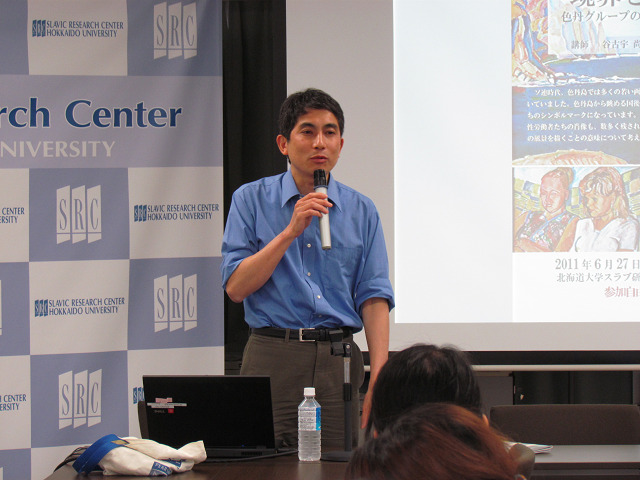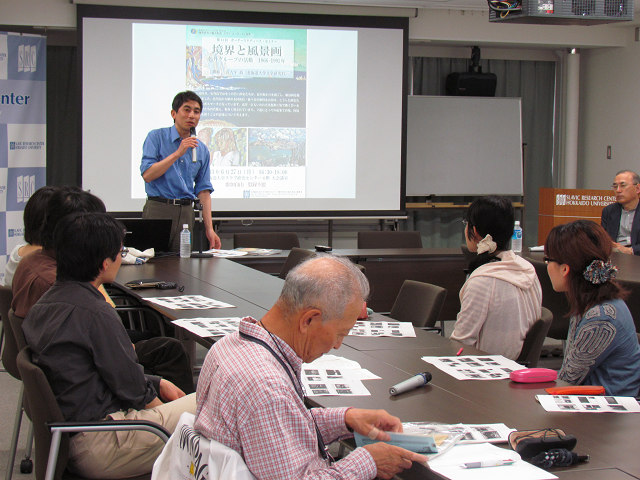
Report on the °»Borders and Landscape Painting – Activities of the Shikotan Island Group 1966-1991°… seminar
2011/06/28
The 14th Border Studies Seminar entitled °»Borders and Landscape Painting – Activities of the Shikotan Island Group 1966-1991°… was held on the 26th of June. The speaker, Professor Yakuo Hisashi, is both an expert in Italian art and engaged in research on Soviet artistic representations of the Far East.
The seminar focused on the °∆Shikotan Group°« movement centered on Oleg Loshakov, and introduced a number of their paintings while explaining the history and motifs of the Shikotan style. In particular, while the artists were gripped by the natural richness and dramatic change in the seasons, the classic European tropes in the picture of Chachadake (on Kunashiri) from Shakotan Bay on the northern shore of Shikotan Island reveal it to be a constructed landscape. Furthermore, it was noted that while the painting of a canning factory and its female workforce seems a particularly Soviet touch, the young male artists may have had more personal reasons for engaging in a close study of the latter.
Additionally, Professor Yakuo speculated that the recovery of the Donkey°«s Tale group°«s activities by Khrushchev in 1962, as a result of which young Russian artists were dispatched to the Provinces in order to depict the realities of the Soviet Union, forms the historical background to the promotion of the °∆Shikotan group°« movement. Questions on whether the paintings were political propaganda and the group°«s position in artistic pantheon were taken from the floor, and all the attendees were, through a look at one movement developed in the border regions under communism, given an insight into Soviet art.



The seminar focused on the °∆Shikotan Group°« movement centered on Oleg Loshakov, and introduced a number of their paintings while explaining the history and motifs of the Shikotan style. In particular, while the artists were gripped by the natural richness and dramatic change in the seasons, the classic European tropes in the picture of Chachadake (on Kunashiri) from Shakotan Bay on the northern shore of Shikotan Island reveal it to be a constructed landscape. Furthermore, it was noted that while the painting of a canning factory and its female workforce seems a particularly Soviet touch, the young male artists may have had more personal reasons for engaging in a close study of the latter.
Additionally, Professor Yakuo speculated that the recovery of the Donkey°«s Tale group°«s activities by Khrushchev in 1962, as a result of which young Russian artists were dispatched to the Provinces in order to depict the realities of the Soviet Union, forms the historical background to the promotion of the °∆Shikotan group°« movement. Questions on whether the paintings were political propaganda and the group°«s position in artistic pantheon were taken from the floor, and all the attendees were, through a look at one movement developed in the border regions under communism, given an insight into Soviet art.









